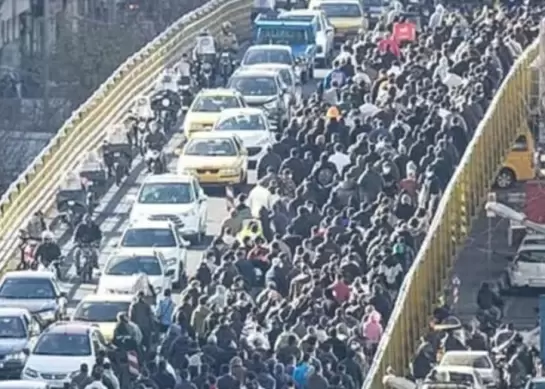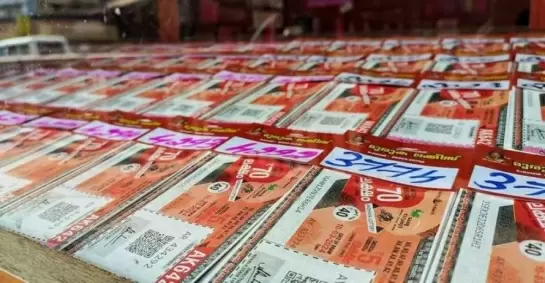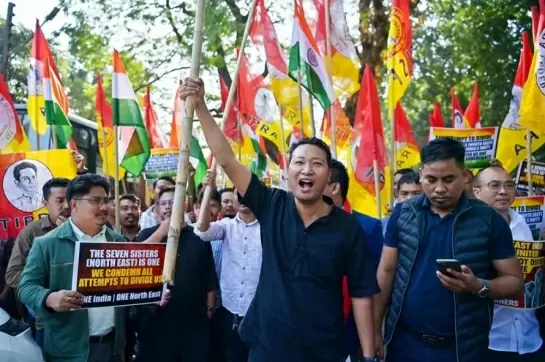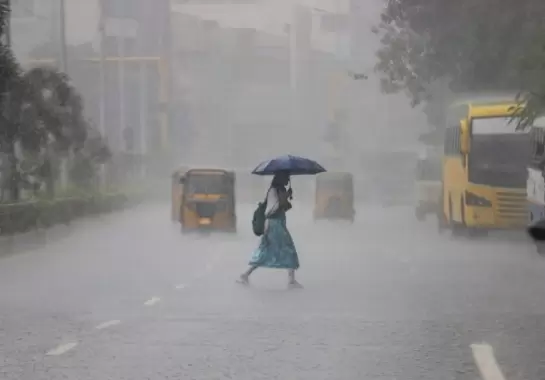Indian Railways battles to extend lines in Northeast
28-August-2019
The northeastern part of the country has always been a challenge to the Indian Railway. While incurring extra costs, the railways have had to deal with unique challenges in laying tracks in the mountainous northeastern region due to its topography, soil formation and natural disadvantages, a top railway official has said.
According to Chief Commissioner of Railway Safety (CCRS-Northeast Circle) Shailesh Kumar Pathak, the landscape, soil conditions and other natural challenges have forced the railways to invest more money and to confront diverse challenges in the Northeast region, comprising eight mountainous states.
"Compared to the other regions of the country and in the mainland states, the expenditure and the challenges are more in the hilly Northeastern region," Pathak told IANS after examining the newly-laid railway tracks in Tripura.
The Northeast Frontier Railway (NFR), one among the 17 railway zones in India, is responsible for extending the railway lines and maintaining train services in seven districts of West Bengal and five districts in north Bihar, besides the eight Northeastern states, including Sikkim.
The first train in the Northeast region chugged out from the industrial city of Dibrugarh in eastern Assam 137 years ago.
According to the CCRS, the per-kilometre expenditure of laying single-line tracks in the Northeastern region is Rs 15 crore, while it is Rs 6 to 7 crore in the plains. Laying a double-line track in the northeast costs Rs 20 to 25 crore per kilometre against Rs 10 to 11 crore in the plains.
"The NFR gets to work at the best pace for only four to five months a year as the region records cyclone and severe rainfall from March to September with the actual monsoon running from June to September. In the other states of India, the good working season is for at least eight months," said Pathak.
"Soil or earth bearing capacity of the Northeastern region is much less compared to other parts of the country. But for the railway engineers, nothing is infeasible and impossible.
The official said that the Northeastern states and large parts of the Himalayan region are siltation and landslide-prone areas.
"The railways have to take extra precautions to deal with the natural adversities. A lesser working period makes the job tougher for railway engineers and others," he pointed out.
He said that the NFR has been trying hard to extend the railway lines to three capital cities of the northeast -- Imphal (Manipur), Aizawl (Mizoram) and Kohima (Nagaland) by 2020.
Assam's main city of Guwahati, the Tripura capital Agartala and the Arunachal capital Itanagar are already linked to the railway network.
A senior NFR official said that due to land-related problems, the expansion of the rail network in Meghalaya and Sikkim has turned into a non-starter. Work is about to extend the railway network in Manipur, Mizoram and Nagaland.
The NFR has laid new railway tracks at two places along the India-Bangladesh border -- Agartala (Tripura) and Akhaura (Bangladesh). The Rs 972-crore project is now under the construction and these railway lines would facilitate the carriage of passengers and goods from the Northeastern states through the Bangladesh railway network.
Accompanied by NFR engineers, Pathak on Tuesday inspected the 110-km newly-laid Agartala-Belonia-Sabroom railway tracks and described them as "excellent and outstanding".
"Agartala-Belonia-Sabroom railway tracks are the first in India, where there is no level crossing on the lines," he said.
Spending Rs 1,150 crore, the NFR has extended the railway lines up to two bordering sub-divisional towns -- Sabroom and Belonia -- both cities situated along the Bangladesh border, facilitating the link with the railway networks of the neighbouring country.
With southern Tripura's Sabroom located just 72 km from the Chittagong sea port in southeastern Bangladesh, India has already got Bangladesh's consent to use the international port to ferry goods to and from the Northeastern states.
An NFR engineer said that to further ensure the safety of the people, the NFR is the first among the 17 railway zones in India that has eliminated all unmanned level crossings in its jurisdiction. IANS
BMC Elections: Thackeray Cousins Unite as BJP Pushes Global City Agenda
Madras HC To Deliver Its Verdict Tomorrow On Thiruparankundram Hill Lamp Case
Trump Says He Watched Maduro Raid From Mar-a-Lago
Venezuelan President, Wife Captured After Strikes On Caracas, Claims Trump
Bengaluru to Get Third-Largest Park After Lalbagh, Cubbon; Basavanna Biodiversity Park Approved









